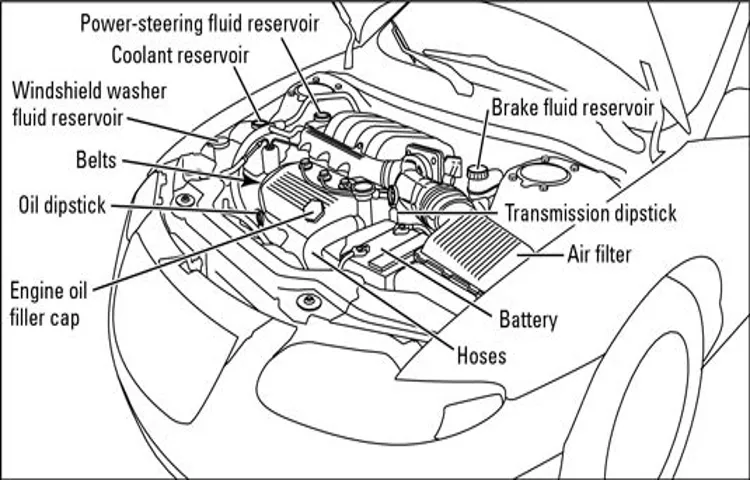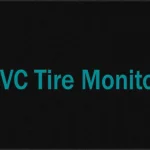Do you ever look at your car and think to yourself, “Does it need coolant?” Maybe you know what coolant is and why it’s important, or maybe you haven’t given it much thought. Regardless, understanding the importance of coolant is crucial for every car owner. Coolant, also known as antifreeze, plays a vital role in regulating the temperature of your car’s engine and preventing it from overheating.
Just like how we rely on a glass of water to cool us down on a hot day, cars rely on coolant to keep the engine running smoothly. Without it, your car could suffer from serious damage, so it’s crucial to know when your car needs a coolant refill or replacement. In this blog, we’ll dive deeper into the importance of coolant, signs that your car is running low, and how to check and refill your car’s coolant levels.
Keep reading to learn everything you need to know about keeping your car’s engine cool and running smoothly.
Table of Contents
Importance of Coolant
If you’re wondering how to know if your car needs coolant, there are a few signs you can look out for. First, check your engine temperature gauge. If it’s higher than usual or near the red zone, it’s likely that your car is low on coolant.
You may also notice steam or smoke coming out from under the hood, which can be a sign of an overheated engine. Another thing to keep an eye out for is a sweet smell coming from your engine, as this can indicate a coolant leak. Coolant is extremely important for your engine’s overall health, as it helps regulate its temperature and prevent overheating.
If you suspect that your car is low on coolant or experiencing a coolant leak, it’s important to take it to a mechanic as soon as possible to prevent any further damage to your engine.
Prevents Engine Overheating
Coolant When it comes to the performance of your car and its longevity, one of the most important aspects is managing its temperature. The engine generates a lot of heat, and without a way to disperse that heat, it will quickly overheat, causing significant damage to the engine. This is where coolant comes in.
Coolant is a mixture of water and a special fluid that regulates the temperature of the engine. It acts as a heat transfer agent, helping to dissipate the heat generated by the engine, preventing it from overheating. Without coolant, your engine would overheat quickly, leading to costly repairs and leaving you stranded on the side of the road.
That’s why it’s incredibly important to keep your coolant levels topped up and to have it changed regularly as part of your car’s maintenance routine. A well-functioning cooling system and fresh coolant can mean the difference between being on the road and being stuck in the workshop. So, take care of your car and its cooling system, and it will take care of you on the road.

Maintains Optimal Temperature
Maintaining the optimal temperature in your vehicle is essential for its smooth performance and longevity. And the key to achieving that is the coolant. Coolant, also known as antifreeze, is a vital component in your car’s cooling system.
Engine coolant prevents your engine from overheating and freezing in extreme temperatures. It also helps prevent corrosion in your engine and radiator, ensuring a long-lasting performance. Using the right coolant is essential for your engine’s health.
Manufacturers usually recommend a specific type of coolant for your vehicle. Using the wrong coolant can cause serious damage to your engine, such as clogging the cooling system, corroding the engine, and degrading the engine’s overall performance. You should also always check the coolant level in your car.
Inadequate coolant levels can cause your engine to overheat and lead to costly repairs. A quick check of the coolant level and concentration can ensure that your engine is running at its optimal temperature. In conclusion, maintaining your car’s optimal temperature is essential for its longevity and performance.
Coolant plays a crucial role here, so it’s essential to use the right one for your vehicle and ensure adequate levels. Inspecting your cooling system regularly and addressing any issues can prevent future headaches and ensure that your vehicle continues to run smoothly for years to come.
Signs Your Car Needs Coolant
If you’ve ever wondered how to know if your car needs coolant, there are a few signs you can look out for. One of the most common is the engine temperature gauge. If it starts to climb into the red zone or your car starts overheating, it’s likely your car needs more coolant.
You may also notice steam or smoke coming from under the hood or a sweet, fruity smell that’s not from the air freshener. Another sign can be a decrease in your car’s performance. If it’s struggling to accelerate or seems sluggish, it could be a result of insufficient coolant and your engine is compensating by working harder.
It’s always important to keep an eye on your car’s fluids and ensure they’re topped up. If you’re unsure about how to check or add coolant, refer to your car’s manual or take it to a professional. By staying on top of your car’s basic maintenance needs, you’ll be avoiding potentially costly repairs and ensuring your car runs smoothly for years to come.
Coolant Warning Light On
Having the coolant warning light turn on in your car can be concerning, but it’s important not to ignore it. This warning light is an indication that there may be a problem with your car’s cooling system and that it needs attention. One common cause of a coolant warning light is low coolant levels.
Coolant, also known as antifreeze, is what prevents your car’s engine from overheating. If the coolant level is low, there may be a leak somewhere in the cooling system. Other signs that your car needs more coolant include the engine running hotter than normal, strange smells, or strange noises coming from under the hood.
If you notice any of these signs, it’s best to take your car to a mechanic to have it checked out as soon as possible to prevent any further damage to your car’s engine.
Engine Temperature Gauge High
Engine Temperature Gauge High If you notice your engine temperature gauge reading higher than normal, it’s a sign that your car needs coolant. Coolant, also known as antifreeze, helps regulate the temperature in your engine and prevents it from overheating. Without proper levels of coolant, your engine can overheat, causing damage to various parts and possibly leaving you stranded on the side of the road.
It’s important to check your coolant levels regularly and top them up as needed. If you’re unsure how to do this, consult your car’s manual or consider taking it to a mechanic for a coolant flush and refill. Ignoring signs that your car needs coolant can lead to costly repairs in the future, not to mention the inconvenience of a breakdown.
Take care of your car’s cooling system to ensure a smooth and safe ride.
Low Coolant Levels
Low Coolant Levels Your car needs a steady supply of coolant in order to operate efficiently. Without it, the engine can overheat and cause serious damage. So, it’s important to be able to recognize the signs that your car needs more coolant.
One obvious sign is a low coolant level. You can check this by looking at the coolant reservoir under the hood. If the level is below the minimum line, it’s time to add more coolant.
Another sign is a warning light on your dashboard. This will usually look like a thermometer with wavy lines next to it. If you see this light, it’s important to stop driving and add coolant as soon as possible.
You may also notice that your car is running hot or that the heater isn’t working properly. These are all signs that your car needs more coolant. Don’t ignore these warnings, as low coolant levels can cause serious damage to your engine.
Be sure to top up your coolant and have your car checked by a mechanic if you notice any of these signs.
How to Check Coolant Levels
If you’re wondering how to know if your car needs coolant, checking the coolant levels is an important step. Coolant is the fluid responsible for regulating your engine’s temperature, and if your coolant levels are low, it can cause your engine to overheat, which can lead to costly repairs. To check your coolant levels, start by making sure your engine is cool.
Then open your hood and locate the coolant reservoir. It should be marked with a minimum and maximum level line. If your coolant levels are below the minimum line, add more coolant until it reaches the maximum line.
If you notice your coolant levels are consistently low, it may signal a leak in the system that needs to be addressed by a mechanic. So, make it a habit to check your coolant levels regularly to prevent costing you an arm and a leg in the long run.
Locate Coolant Reservoir
Checking your vehicle’s coolant levels is essential to ensure proper performance and prevent overheating. The first step in this process is locating the coolant reservoir. This is usually a white, translucent plastic tank with maximum and minimum lines marked on its side.
It’s often found near the radiator and has hose connections leading to it. Sometimes, it may also have a pressure cap on top. Once you have located the coolant reservoir, make sure the engine is cool before opening it.
Remove the cap and check the level of the coolant. The coolant should be between the maximum and minimum lines on the side of the reservoir. If it’s below the minimum line, add a mixture of water and coolant to reach the appropriate level.
Regular checks of your coolant levels can help ensure optimal vehicle performance and prevent potential engine damage. So don’t forget to check your coolant levels regularly to keep your vehicle running smoothly.
Check Coolant Level
Checking coolant levels is an essential part of maintaining your car’s engine health and preventing overheating. To check the coolant level, first, make sure the car is cool and park on level ground. Locate the coolant reservoir, which is typically a transparent plastic container near the radiator.
The level should be between the minimum and maximum marks indicated on the container. If the level is low, add a mixture of coolant and water to the reservoir until it reaches the appropriate level. Be sure to use the correct type of coolant for your car, as different cars require different formulas.
It is also important to check for any leaks or cracks in the coolant system, which may cause the coolant to leak out and result in engine damage. Regularly checking and topping off your coolant levels can help keep your car’s engine running smoothly and prevent costly repairs down the line.
Conclusion
In conclusion, understanding when your car needs coolant can save you from overheating (literally and figuratively) on the road. If your car is showing signs of a hot temper, such as abnormally high engine temperature or strange noises, it’s time to check your coolant levels. Remember, keeping your car cool isn’t just for the sake of comfort, it’s for the health and longevity of your vehicle too.
So, if you want to ride smoothly on the road, make sure to keep your coolant levels topped off and your eyes open for any warning signs. After all, prevention is always cooler than a breakdown on the side of the highway.”
FAQs
What is coolant and why is it important for my car?
Coolant is a mixture of antifreeze and water that helps regulate your engine’s temperature. It is important for your car because it helps prevent your engine from overheating, which can cause serious damage.
How often should I check my car’s coolant level?
It is recommended to check your car’s coolant level at least once a month, or before any long trips.
How do I check my car’s coolant level?
To check your car’s coolant level, make sure the engine is cool and locate the coolant reservoir under the hood. The reservoir should have a minimum and maximum level marked on it. If the level is below the minimum, add coolant until it reaches the maximum level.
What happens if my car runs out of coolant?
If your car runs out of coolant, the engine can overheat and cause serious damage. It is important to always maintain the proper coolant level in your car.
Can I use any type of coolant in my car?
No, not all types of coolant are compatible with all types of cars. It is important to check your car’s owner manual to see what type of coolant is recommended for your specific make and model.
How often should I replace my car’s coolant?
It is recommended to replace your car’s coolant every 2-3 years or as recommended by your car’s manufacturer.
What are the signs that my car needs coolant?
Some signs that your car needs coolant include the engine temperature gauge reading high, steam coming from under the hood, and a sweet smell coming from the engine. If you notice any of these signs, it is important to stop driving immediately and check your car’s coolant level.



